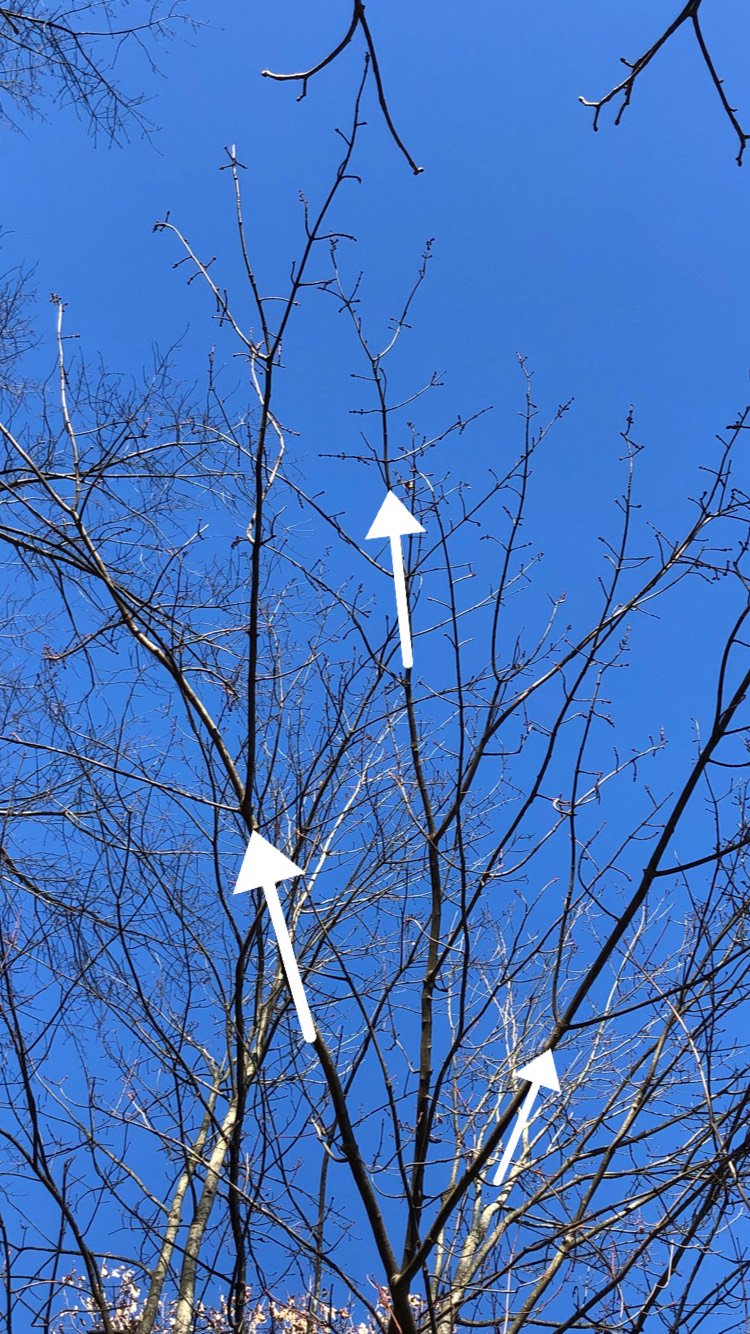Red maple buds emerging on the opposite side of the twig from one another.
When it comes to tree identification, the dynamic characteristics of leaves are often the first place people look. Makes sense. However, this makes tree ID a real issue when dealing with deciduous trees which lose their foliage during winter. Fortunately, there are other identifiers naturalists use when classifying a tree in question. The way buds and branches grow for example, is one way to determine the species of a tree that is dormant. The most frequently seen bud arrangements are opposite and alternate. Quickly narrow down the potential species by learning to recognize the different bud arrangements.
Red maple canopy, the opposite arrangement is more pronounced as buds form into branches.
In this example, you can see how the buds on the Red maple twig are growing opposite from one another. With time, these buds develop into branches and the growth becomes more pronounced. It is not uncommon to use binoculars when identifying trees. This offers a closer view of branch structure on older trees that have a higher canopy. In Ohio we use the acronym M.A.D.BUCK which includes all of the opposite growing trees native to the state. Maple, Ash, Dogwood and Buckeye. Therefore, once you determine that the tree you’re identifying is opposite branching, you know that you only need to compare Maple, Ash, Dogwood and buckeye which really narrows down your study. Conversely, if it is determined that the tree is NOT opposite, you immediately know it isn’t in the MADBUCK group.
There are a lot of potential trees out there so using various tricks to reduce possible options makes the task much easier. Its important to note that trees are imperfect. There are outside variables that can change these identifying features. For example, in an urban landscape, a tree may have been pruned which could alter some of the opposite branch structure. Storm damage or animals could also change the growth pattern an individual branch displays. This is why it is crucial to examine numerous branches on multiple areas of a tree before determining which type of branch arrangement the tree has. Additionally, tree identification works best when a combination of techniques are used.
American hornbeam twig with alternate bud arrangement.
Notes:
The image to the right is to provide comparison. This twig comes from an American hornbeam. Observe how the the buds and small branches do not protrude opposite from one another but rather in an alternate orientation similar to a zipper.




